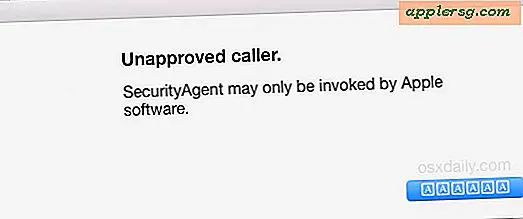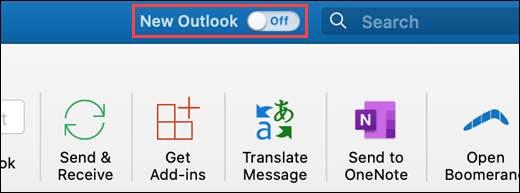Agent Shift Mac Os Catalina
CTRL + SHIFT + ESC on the Mac? Question by Guest 2016-08-26 at 12:06. On Windows, you can press the keyboard shortcut CTRL + SHIFT + ESC with which you can open the task manager. Do I need any additionally or external secondary program making some type of task manager available on Mac OS X? Reply Positive Negative.
- Verity Confidential Cloud Agent for Mac Installation Guide Agent Version 1.6 - 1.7, 2.3, 2.5 September 3, 2020 (Updated April 9, 2021).
- This post provides step by step guide to Install McAfee agent on Mac OS. Though the McAfee KB available for the same, could see some of us struggling to do it. So felt outlining a steps with commands will be helpful. Consider Mac OS version 10.14.3 and McAfee Agent version 5.6.2 used for demonstration here.
Take screenshots of sheets with Command-Shift-4 20 comments Create New Account
| Click here to return to the 'Take screenshots of sheets with Command-Shift-4 ' hint |
The following comments are owned by whoever posted them. This site is not responsible for what they say.
Yup. I've been using it for ages. I can't test it right now, but it probably was already working on Tiger.
Thanks!
To be clear, the technique works for all windows, including the menubar and menus, including pop-up menus. I could've sworn I'd used it to capture a sheet before, but it seems not to work on 10.7 (which may mean that they changed the default behavior compared to an earlier OS where it did work).
The command line program screencapture allows you to exercise this and even more options (e.g. you can have it leave out the shadow). To capture a sheet (although I found that it sometimes leaves off some of the sub-controls in the standard save dialog), you can use screencapture -iwa file.png.
I just tested this under 10.7.5. It gives a cursor that I can click and drag to outline an area. When I release the drag, it 'clicks' and leaves a .png file in my desktop with the area's contents. It doesn't seem to understand any window boundaries. Just -> what you see is what you get <-
Looking at the other comment, I find that hitting the space-bar after Command-Shift-4 does switch to selecting the window and creating an image of a camera. But Command-click is needed to actually create the copy. This seems to work on my wife's 10.6 system as well.
In Lion, you have to type Command-Shift-4, hit Space to switch to the window-camera mode, and then hold down Command to take a picture of just the sheet.
Second Edit: Just read the rest of the main post: It looks like this was just reversed in Mountain Lion.
In Snow Leopard, you could take a picture of the sheet or the window but not both. Lion made 'Window + Sheet' the default with command switching to 'window or sheet'; Mountain Lion just reversed that.
This has definitely been there for a long time, I remember using this when I got my new Mac back when 10.6 Snow Leopard came out. Maybe even before that.
Re: Take screenshots of sheets with Command-Shift-4
The spacebar after command-shift-4 has worked since at least 10.4, probably earlier (possibly back to Classic.) I thought it worked on sheets for as long as OS X has had sheets, but I may be wrong (haven't needed to capture sheets all that often.)
FWIW, holding down the control key during any capture (command-shift-3/4) will send the capture to the clipboard, and after using the space bar with command-shift-4, holding down the option key will leave off the window's shadow, which extends much further than you might think.
Also worth mentioning, the space bar toggles between the window and the dragged rectangle for command-shift-4.
Works in MacOS 10.4.11 on a PowerBook G3 Pismo
Yes, I'm fairly sure this has always been possible but don't have an old enough machine around.

Works on 10.7.5 as well. Also of note: if, while holding the command key, you hover the mouse off the sheet and onto the window it's attached to, you can take a screenshot of the window itself *without* the sheet, i.e. the resulting screenshot shows the window as it would appear without the sheet.
I'm not sure why anyone would need that feature, but there it is. Someone must have figured it' be of some use.
I recall using Command-Shift-3 (whole desktop) and Command-Shift-4 (selection) in Mac OS 9 and probably earlier. This Apple Support page suggests it's been available since at least Mac OS 8.5. Adding Spacebar to capture an individual window might be new as of OS X. Still, it's good to get these kinds of hints every so often because many people are not aware of them, and it's not necessarily clear that a sheet dialog can be captured the same way as a proper window.
Screenshots have been in the Mac OS since 1985 per wikipedia
Thank you for that. Now read the hint.

---
Mac OS X Hints editor - Macworld senior contributor
http://www.mcelhearn.com
Mac OS X Hints editor - Macworld senior contributor
http://www.mcelhearn.com
I just tested this with TextEdit's Save panel on Lion. It works a little too well: Not only does it not capture the sheet's parent window (as it would without ⌘), it also does not capture the child window in which the Save panel stores TextEdit's accessory view (the view that contains the encoding pop-up and option to imply .txt).
This hint has been around for ages. I just tested it on a 10.3.9 eMac (yes, we still have those...UGH!) and I may have been using that trick even further back than that.
You can even capture individual pieces on the desktop (HD/app/file icons), the dock pieces (icons, or just the outline of the dock...although not sure why you'd want that), etc. Get the camera icon up and start moving around. Amazing what little bits and pieces you can grab in a screen shot.
Yea, except sheets weren't added until - I think - Leopard. So you don't have them in 10.3.
---
Mac OS X Hints editor - Macworld senior contributor
http://www.mcelhearn.com
Mac OS X Hints editor - Macworld senior contributor
http://www.mcelhearn.com
Any source for that claim? IIRC they where introduced with Mac OS X.
Sheets were indeed part of the original presentation of Aqua. So they were actually there even before the release of the first public version of Mac OS X.
However, the behavior of screen capture regarding sheets has evolved through the various versions of Mac OS X, which is what this hint is about.
My bad, that's correct. The behavior changed with Lion, I think, and prior to that they worked very differently with screen shots.
Agent Shift Mac Os Download
---
Mac OS X Hints editor - Macworld senior contributor
http://www.mcelhearn.com
Mac OS X Hints editor - Macworld senior contributor
http://www.mcelhearn.com
deleted by user
Edited on May 22, '13 01:29:56PM by ShawnLevasseur
Installing your Type 1 or OpenType .otf fonts on Mac OS 8.6 to 9.2 or Mac OS X “Classic” requires ATM Light 4.6 or later (4.6.2 for Mac OS X Classic).
If you are running Mac OS X, decide if you want to install fonts into both the Classic environment and the OS X native environment. If you want your fonts to be accessible to both Classic and Carbon/native applications, install your fonts into the Classic environment. If the fonts only need to be accessible to Carbon/native applications, install into the OS X native environment instead.
Note: Do not move an entire folder containing fonts into the System location. The Mac OS can only read font files that are loose in the system font location; it can’t read files inside another folder.
Agent Shift Mac Os 11
To install your fonts using a font management utility (e.g., Extensis Suitcase, Font Reserve, FontAgent Pro or MasterJuggler), refer to that utility’s documentation for instructions on adding and activating the fonts.
Agent Shift Mac Os X
If you are using ATM Light without a font management utility. use the following instructions to install the fonts:
- Before installing your fonts, quit all active applications.
- Locate the fonts you want to install on your hard-drive or go to the location you downloaded the fonts to. Each font package or collection will be in its own folder.
- Install your fonts in the System Folder:Fonts folder by moving or copying all the font files from their individual font folders into the System Folder:Fonts folder. For PostScript Type 1 fonts, this includes both the outline font files (red An icons) and the font suitcases. Often a family of outline fonts will be associated with a single font suitcase. OpenType .otf fonts are single-file fonts and do not include font suitcases.
- The fonts are now installed and will appear in the font menus of your applications.